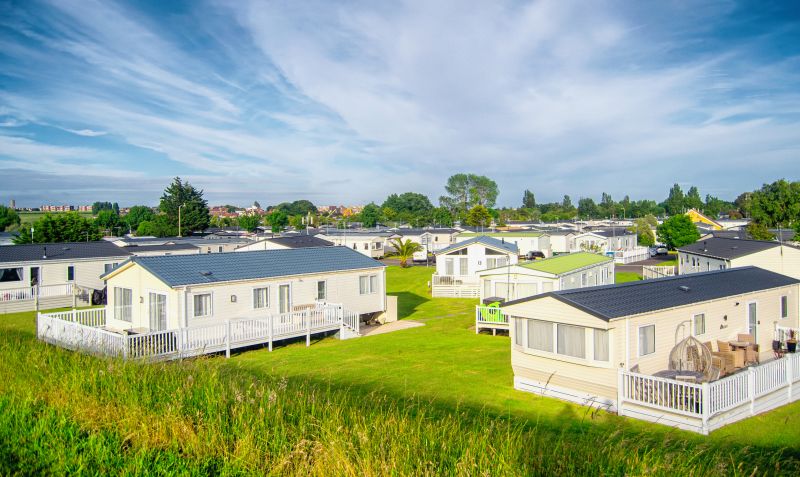Popular Insulation Products to Improve Mobile Home Comfort
Choose from the most sought-after insulation solutions that help keep your mobile home warm in winter and cool in summer.
 Selecting appropriate insulation products for a mobile home involves understanding the unique requirements of mobile structures and the various options available. Insulation plays a vital role in maintaining comfortable indoor temperatures, reducing energy costs, and minimizing noise transfer. Mobile homes often have different construction materials and layouts compared to traditional houses, which influences the choice of insulation. It is important to consider factors such as R-value, ease of installation, and compatibility with existing structures when choosing insulation products.
Selecting appropriate insulation products for a mobile home involves understanding the unique requirements of mobile structures and the various options available. Insulation plays a vital role in maintaining comfortable indoor temperatures, reducing energy costs, and minimizing noise transfer. Mobile homes often have different construction materials and layouts compared to traditional houses, which influences the choice of insulation. It is important to consider factors such as R-value, ease of installation, and compatibility with existing structures when choosing insulation products.
Top Overall Option
Fiberglass Batts Insulation
Fiberglass batts are a versatile and commonly used insulation option for mobile homes. They are available in various thicknesses and widths to fit different spaces, and they are relatively straightforward to install, making them suitable for DIY projects. When properly installed, fiberglass batts can provide effective thermal resistance and help reduce noise transfer. They are widely accessible and compatible with many mobile home configurations, making them a practical choice for many homeowners seeking reliable insulation.
Types of Products For Mobile Home Insulatings
Fiberglass Batts
Pre-cut or roll fiberglass panels designed for easy installation in walls and ceilings.
Foam Board Insulation
Rigid panels made from polystyrene or polyisocyanurate, suitable for walls, floors, and skirting.
Spray Foam Insulation
Expanding foam that provides excellent air sealing and thermal resistance, ideal for hard-to-reach areas.
Reflective Insulation
Insulation that reflects radiant heat, often used in attics and under floors.
Mineral Wool Insulation
Fire-resistant and sound-absorbing material suited for walls and ceilings.
Reflective Foil Insulation
Thin reflective layers that can be installed under roofing or in wall cavities.
Blown-In Insulation
Loose-fill material that can be blown into wall cavities or attics for added coverage.
Rigid Polyurethane Panels
High R-value panels suitable for basement or floor insulation.
Insulation Wraps and Sleeves
Flexible wraps designed for pipes, ducts, and other irregular spaces.
Acoustic Insulation Panels
Materials designed to reduce sound transmission between rooms or from outside.
Reflective Bubble Insulation
Multi-layered material combining reflective foil and bubble wrap for versatile insulation.
Eco-Friendly Insulation Materials
Natural fiber insulations such as cellulose or sheep's wool for those seeking alternative options.
Popular Choices
A widely used insulation option appreciated for its affordability and ease of installation.
Popular for its high R-value and durability in various applications.
Chosen for its excellent air sealing capabilities and thermal performance.
Common in hot climates to reflect radiant heat and improve comfort.
Favored for fire resistance and soundproofing qualities.
Popular for filling irregular spaces and adding insulation to existing walls.
Valued for high R-values and moisture resistance.
Versatile for attics, walls, and floors to reflect heat.
Convenient for insulating pipes and ducts efficiently.
Popular for reducing noise between rooms and from external sources.
Cost-effective and easy to install for various small-scale insulation needs.
There are several types of insulation suitable for mobile homes, including fiberglass batts, foam boards, spray foam, reflective insulation, and mineral wool. Each type offers distinct advantages and considerations. For example, fiberglass batts are widely used due to their affordability and ease of installation, while spray foam provides excellent air sealing properties. Reflective insulation can be effective in hot climates by reflecting radiant heat away from the interior. Proper installation of these materials can significantly enhance the energy efficiency and comfort of a mobile home.
In addition to selecting the right material, it is crucial to evaluate the specific areas of the mobile home that require insulation, such as walls, ceilings, floors, and skirting. Proper sealing of gaps and cracks is also essential to maximize insulation effectiveness. When shopping for insulation products, consider the compatibility with your mobile home's existing structure, as well as any local building codes or regulations that may apply. Consulting with a professional or experienced installer can help ensure the best outcomes for your insulation project.
Key Buying Considerations
- Determine the R-value needed based on your climate and comfort preferences.
- Consider the compatibility of the insulation material with existing structures and surfaces.
- Evaluate ease of installation, especially if planning a DIY project.
- Check for fire resistance and safety ratings relevant to your area.
- Assess moisture resistance and mold susceptibility of the insulation type.
- Think about noise reduction properties if soundproofing is a priority.
- Review the size and dimensions to ensure proper fit within your mobile home's spaces.
- Consider the longevity and durability of the insulation material over time.
- Account for any local building codes or regulations governing insulation types and installation methods.
- Evaluate the environmental conditions inside your mobile home, such as humidity and temperature fluctuations.
- Determine if additional sealing or vapor barriers are necessary for optimal performance.
- Balance cost with quality to ensure a reliable and effective insulation solution.
- Research the availability of professional installation services if needed.
- Think about future access or potential removal when selecting insulation types.
